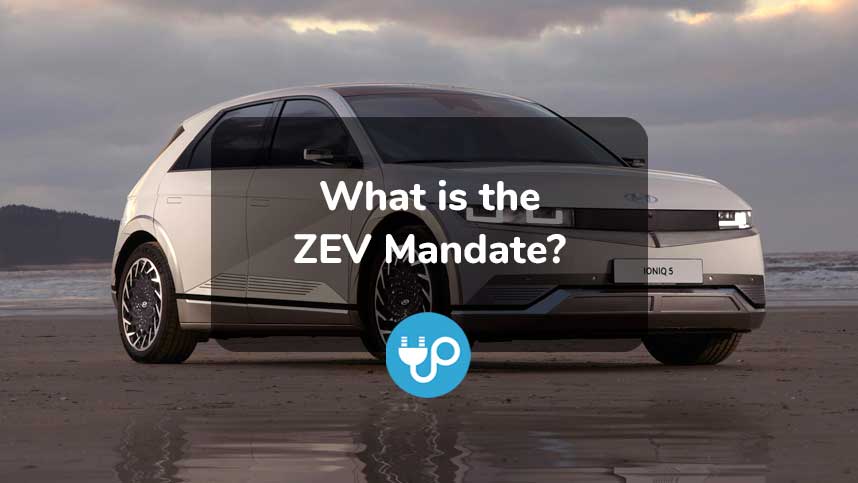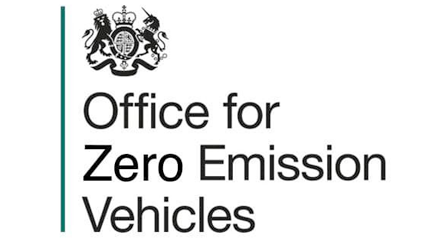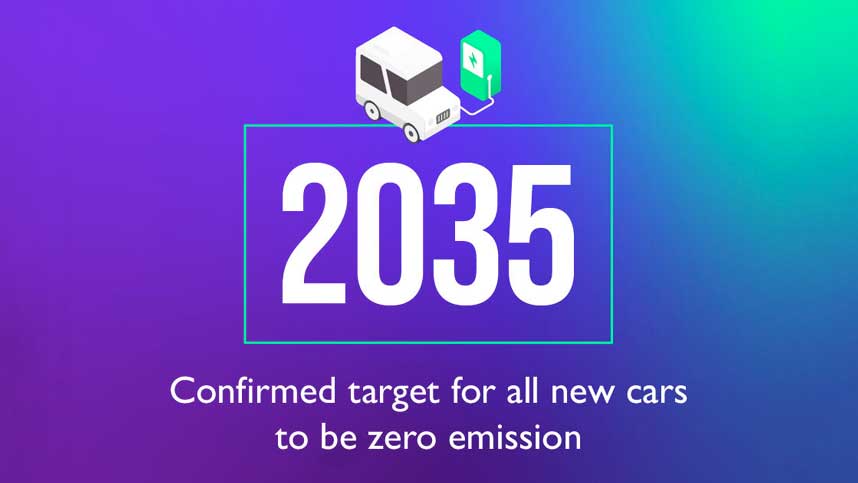
What is the ZEV Mandate?
The level of vehicle emissions on UK roads has been a central topic for debate in recent years.
The need to combat emissions has become more prevalent than ever to help reduce increasing concerns surrounding climate change.
In the fight to reduce carbon emissions, the UK government's 'ZEV mandate' is pressurising car manufacturers to sell an increasing numbers of EVs year-on-year from 2024 up to the 2035, when the sale of petrol and diesel vehicles will be finally banned.
But what is the ZEV mandate exactly? We explore more below.
Chapters
What is the UK Zero Emissions Vehicles (ZEV) Mandate?

The ZEV Mandate is a UK government policy tool which has put pressure on vehicle manufacturers to focus on selling a specific percentage of electric vehicles per year.
This is in an attempt to increase the number of EVs on the roads, as well as make them more popular among drivers who are still reluctant to make the switch.
As a result, the ZEV Mandate is also contributing to reducing the number of vehicles which work with internal combustion engines, and consequently, greenhouse gas emissions will be reduced.
ZEV Mandates have been introduced in various countries across the European Union, as well as in a good number of states in the USA, and even in China.
While it is a somewhat complex policy, we can summarise it for better understanding as follows:
- There is an imposition on car manufacturers to sell a percentage of ZEVs every year. This percentage is set to increase over time, until by the year 2035 it should be at 100%.
- ZEV sales made by car manufacturers will be converted into certificates. The sellers will need to hold a certain number of certificates by the end of each year to avoid fines.
- For car manufacturers who fail to reach the set target, there is the possibility of either trading certificates with other car manufacturers who managed to exceed the target, or else be fined £15,000 per car.
- There are separate targets for CO2 emissions in order to help in regulating non-ZEVs.
When did the ZEV Mandate become law?
The UK government has now enacted the ZEV Mandate into law, which officially came into force from 3rd January 2024.
This has brought the UK to be more in line with EU countries and Canada.
However, there have been critics who condemned the fact that the ban on new petrol and diesel cars was delayed from 2030 to 2035 by British Prime Minister Rishi Sunak.
The argument is this delay will only help to stall the sale of electric vehicles in favour of hybrid cars, which contain both an internal combustion engine as well as a small battery for low speed local driving, thus hurting the transition to cleaner, zero-tailpipe emissions vehicles.
Other say this longer timescale will enable customers to make their choices and switching in a more reasonable manner, while also allowing the public EV charging infrastructure to be improved in time.
As one can imagine, neither side can agree that the delay is either good or bad.
UK Government commitments
Back in 2019 the UK committed to meet the target of zero greenhouse gas emissions by the year 2050.
In 2020, ex-Prime Minister of Great Britain Boris Johnson announced the “Ten Point Plan for a Green Industrial Revolution”.
This outlined that by 2030 there will be no more new fuel-based cars and vans sold.
This policy was later reviewed, setting the planned phase out to the year 2035 instead, adding another 5 years onto the existing target.
The ZEV Mandate requirement was to have at least 22% of new cars and 10% of new vans to be zero-emission in 2024.
The Government also proceeded to introduce a number of schemes with the aim of lowering both the upfront as well as the running costs of owning an electric vehicle.
UK ZEV Mandate implementation
Between April and June 2022 the UK Government ran a consultation on the following areas:
- The level of ZEV uptake, also referred to as trajectories
- The methods relating to certificate allocation and use
- The banking, borrowing and transfer of certificates
- Whether there should be any derogations and exemptions
- Regulating the non-ZEV vehicles
After this consultation, the UK Government announced the results of the ZEV Mandate in March 2023, thereby confirming the 2030/35 dates and the fact that the trajectory was going to be set from 22% in 2024 to ultimately reach 100% by the year 2035.
Annual ZEV Mandate targets
The annual targets of the ZEV car sales will progressively increase from one year to another as follows:
ZEV Mandate EV Target Dates |
|||||
|---|---|---|---|---|---|
| Target Year: | 2024 | 2026 | 2028 | 2030 | 2035 |
| Target Sales: | 22% | 33% | 52% | 80% | 100% |
The percentages indicated between 2031 and 2034 are to be confirmed in future legislation.
In the case of commercial vehicles the interim targets are slightly lower.
By 2030 they are set to rise to 70%, for instance.
In cases when manufacturers fail to meet the target by the end of that particular year, they may borrow credit from other manufacturers.
However the amount of credit permissible will be reduced consistently in the coming years.
For instance, in 2024 there is 75% trading allowed, but it will be reduced to just 25% by 2026.
Financial penalties in case of shortfalls are substantial.
Do other countries have ZEV mandates?
Yes, there are several countries who have adopted the ZEV Mandate as a key way to move on to zero emissions.
It was originally kicked off in California back in 1990.
It was also introduced in China and several states in the United States.
In countries that are within the European Union, the ZEV Mandate is also in place.
Car makers are required to cut CO2 emissions by 37.5% by the year 2030, and this is substantiated by a ban on the sale of new petrol and diesel cars by 2035, unless they can be fuelled by efuels.
This is a key element in the plan to address climate change through a significant reduction in greenhouse gas emissions.
The way the EU is addressing it can be seen as being far more ambitious than the efforts being made by the US in this regard.
Even though several states have announced that there will be bans on gas-powered cars, and half of all new passenger cars and light trucks will need to be zero-emission vehicles in 2030, many feel that more can be done to make the switch quicker.
However, there is no denying that the shift from combustion engine to EVs is not an easy one.
The fact that China has a dominance in the field of electric battery supply, coupled up by the need for more investment in the charging infrastructure, makes the transition increasingly challenging.
Conclusion
With the ZEV Mandate we will consistently start to benefit from reduced greenhouse gas emissions as more EVs will be bought progressively, until fuel based vehicles are phased out.
This will also lead to improved air quality and increased energy security.
Blog Archive
- Where Can I Charge My Electric Car?
- Electric Car Maintenance and Servicing Guide
- How Often Should I Charge My Electric Car?
- How to Check EV Battery Health
- Do Electric Cars Pay Road Tax?
- October 2024 Budget: Key EV News
- EV vs ICE – Which is Best?
- Should I Charge My EV to 80 or 90 or 100%?
- UK Government Announces Hybrid Sales Allowed Until 2035
- BEV vs PHEV – What’s the Difference?
- Definitely Not A Guru (Jim Starling) Reviews Joosup
- How Long Do Electric Car Batteries Last?
- 25 New Electric Car Brands on UK Roads
- General Election 2024: Major Party Net Zero Policies Compared
- Electric Car Service Costs vs ICE
- CHAdeMO vs CCS – What’s the Difference?
- Mr EV Reviews Joosup
- What is the ZEV Mandate?
- Spring 2024 Budget: No VAT Rate Cut on Public EV Charging
- What is Regenerative Braking?


